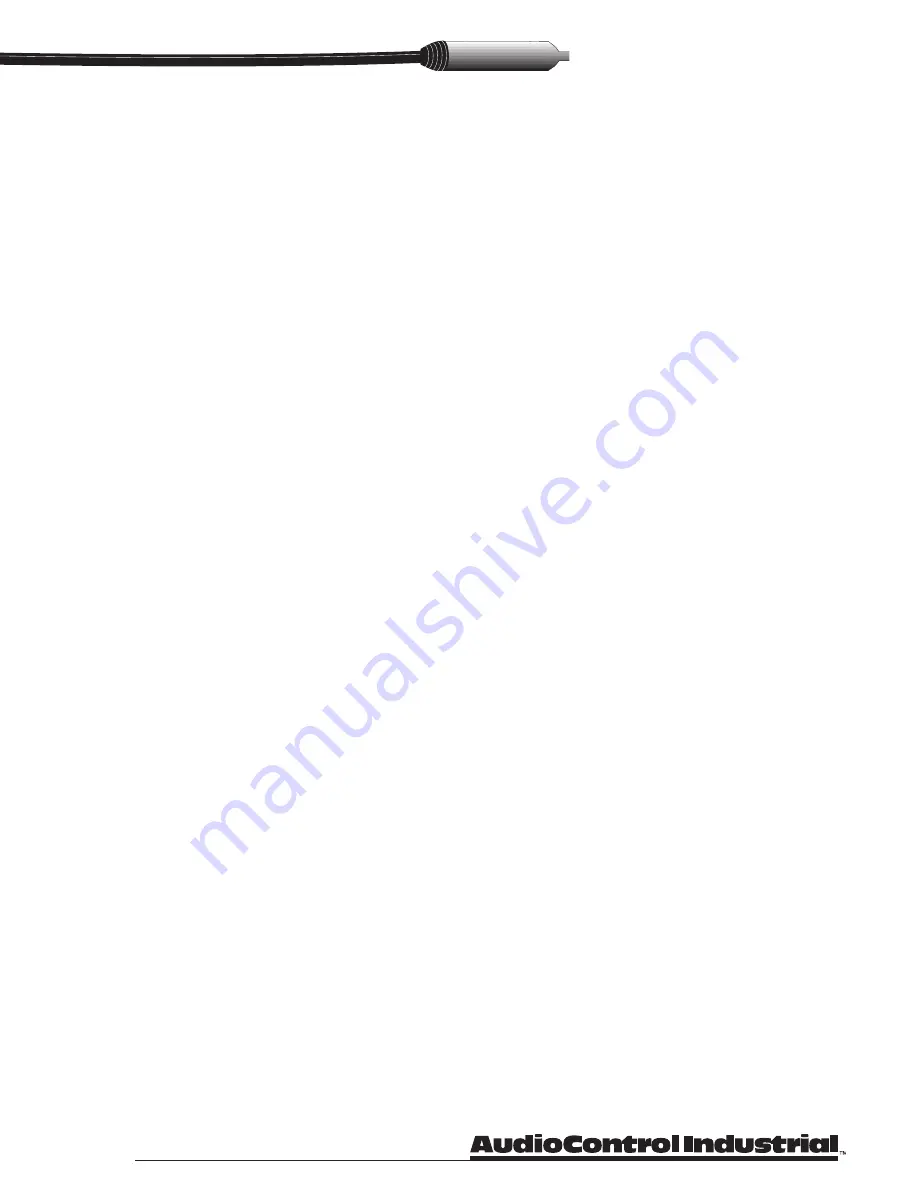
Acoustical Testing with
the SA-3051/SA-3052
Perhaps the most important use of the SA-3051/SA-3052 is as an acoustical measuring tool: e.g. equaliz-
ing sound systems. This section of the manual discusses the process and rationale behind using a real-
time-analyzer and an equalizer as an integral part of any sound system.
Overview
(or what we're trying to accomplish)
The primary reason for using the analyzer with an equalizer is to do what our ears can't do reliably:
adjust a sound system to a known reference condition. The reason that we can't do this "by ear" is our
rather poor long term auditory memory. In other words, our hearing process is very adaptive. Our hearing
adjusts to compensate for varying conditions, sound pressure levels, and tonal balances. When presented
with a change, our sense of hearing can discern that change very readily. This is our short-term auditory
memory. On the other hand, our ears are not very good at remembering things over a long period of time,
especially when there are unrelated sounds between the periods of recall.
Another problem is threshold shift caused by exposure to loud sounds. Without getting into a lot of detail
(don't worry, we will later), the threshold of hearing (the SPL where you can sense the presence of a
sound) shifts upward when the ear is exposed to loud sound. The recovery time can be measured in hours
to days, depending on the intensity and duration of the exposure. For this discussion, it’s just another
problem, or source of error.
For these reasons, and many more, a real-time-analyzer with a calibrated microphone is one of the most
popular methods of measuring the frequency response of a sound system within an acoustical space.
In a nutshell, a pink noise source excites the space, a microphone picks up the acoustical signal and con-
verts it to an electrical signal. The real-time-analyzer (RTA) breaks the signal up into equal octave-per-
centage bands, and displays the signal level of each band individually. The display can be
LCD
, a video
display, or an
LED
matrix. The SA-3051/SA-3052 uses the latter method.
In the real world, very few things are perfect, and expensive sound systems are no exception. Traditional-
ly loudspeakers are measured in an anechoic (adj:
an
- not having,
echoic
- echoes) chamber. An anechoic
chamber is a large room, with the floor, walls, and ceiling lined with acoustically absorbent material. Any
sound emitted within the chamber is absorbed.
Being inside an anechoic chamber is a strange experience. First, you are standing on a suspended floor
made of steel cables. If you are afraid of heights, this is just a good beginning. Since the walls absorb all
sound, it is eerily quiet inside. You can actually hear your blood coursing through your blood vessels.
At any rate, an anechoic chamber is hardly the same as an average living room. However perfectly the
loudspeaker measured within the chamber, putting it into an average living room changes the whole ball
game. First, the floor, walls, and ceiling are anything but totally absorbent. This allows the room to have
resonances, standing waves, and a sound of its own. The room interacts with our perfect loudspeaker to
produce an imperfect system.
Before we go
any
further, you should note that equalization is a tool. Correctly applied it can do won-
ders. Some situations are beyond help. No amount of equalization will overcome the problems caused by
reflections, standing waves, and excessive resonance. There is only one cure for an acoustical disaster:
explosives.
There is more to equalizing a sound system than simply adjusting the equalizer until the analyzer display
is a straight line. It's important to know which defects you can improve on, and which ones you're wasting
your time on. If this weren't so, we could train monkeys to do this, and a fair number of system installers
would be looking for work.
Overview
4-1
















































